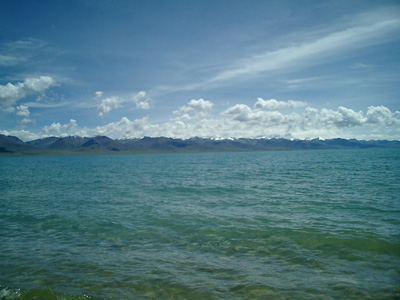Chinese and German scientists join hands in Tibetan Plateau research

Institute of Tibetan Plateau Research (ITP) was founded by Chinese Academy of Sciences (CAS) to better study the Tibetan Plateau. It aimed at world advanced level and international cooperation.
As early as ITP was still in preparation, Prof. Lu Yongxiang, President of CAS proposed the idea of setting up a research institute with MPG and DFG to study the Tibetan Plateau together during his official visit to Germany. In May, 2004, Prof. Li Jiayang, vice President of CAS, accompanied by Guo Huadong, vice secretary and director of Bureau of International Cooperation of CAS, Fu Bojie, director of Bureau of Resources and Environment and some scientists from ITP made another visit to German to discuss the issue of co-establishing ITP. Their proposals had aroused the interest of the German counterparts, who immediately sent a delegation led by Prof Eigenburg, vice President of DFG, to Beijing to work on the detail of the plan. The German deputy was impressed by ITP and agreed to join hands in establishing the research institute. Their meeting succeeded on 23rd, May, 2004 in signing an agreement between CAS and DFG to conduct high level cooperation.
Such a cooperative project also attracted the attention of MPG, who after exchanging views with Chinese colleagues, assigned Max Planck Institute of Biogeochemistry (MPIB) to initiate its cooperation with ITP. On 2nd, August, three researchers, representing MPIB, participated in Sino-Germany Scientific Cooperation Workshop. In this workshop, Chinese and German scientists jointly put forward two complex international cooperation programs. Besides, they worked out detailed research subjects and working schedules, promising to meet in Germany early next year for further discussion and launching of their cooperation project.
On 5th, August, ITP and MPIB both signed on their cooperation contracts, thus started their official collaboration. Scientists from the two institutes then set out on a joint expedition to study lake sedimentary on the Tibetan plateau. To assure this activity, MPIB ferried specially an amount of scientific apparatus from Germany to Lahsa, including lake drillers, dinghies, tents and bottles for sampling. On 8th, August, the joint group arrived at Namucuo, northeast of the Tibetan Plateau, to investigate lake sedimentary, chemical nature of the water, descending rate of the sediments and property variation of the lake in this highest salt lake of the world.
Their hard work has ended up with 100 plus samples of lake water and bottom mud from that region. According to the cooperation contract, part of the samples was taken home by German scientists for further studies, while both sides should share their scientific data thereupon.
A good beginning is half success. Starting from this fruitful joint activity, Chinese and German scientists will make more progresses in their later cooperation, bringing ITP to a platform for international Tibetan Plateau research.

